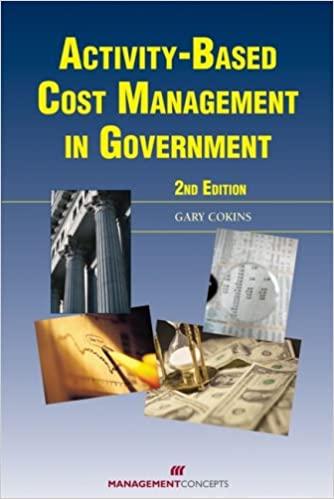Question
Analyzing and Interpreting Equity Accounts and Comprehensive Income Following is the shareholders' equity section of the 2010 balance sheet for Procter & Gamble Company and
Analyzing and Interpreting Equity Accounts and Comprehensive Income Following is the shareholders' equity section of the 2010 balance sheet for Procter & Gamble Company and its statement of shareholders' equity.
| June 30 (In millions, except per share amounts) | 2010 | 2009 |
|---|---|---|
| Shareholders' Equity | ||
| Convertible Class A preferred stock, stated value $ 1 per share (600 shares authorized) | $ 1,277 | $ 1,324 |
| Non-voting Class B preferred stock, stated value $ 1 per share (200 shares authorized) | -- | -- |
| Common stock, stated value $ 1 per share (10,000 shares authorized; shares issued: 2010-4,007.6, 2009-4,007.3) | 4,008 | 4,007 |
| Additional paid-in capital | 61,697 | 61,118 |
| Reserve for ESOP debt retirement | (1,350) | (1,340) |
| Accumulated other comprehensive income (loss) | (7,822) | (3,358) |
| Treasure stock, at cost (shares held: 2010-1,164.1, 2009-1,090.3) | (61,309) | (55,961) |
| Retained earnings | 64,614 | 57,309 |
| Noncontrolling interest | 324 | 283 |
| Total shareholders' equity | $ 61,439 | $ 63,382 |
| Consolidated Statement of Shareholders' Equity | ||||||||||
|---|---|---|---|---|---|---|---|---|---|---|
| Dollars in millions; Shares in thousands | Common Shares Outstanding | Common Stock | Preferred Stock | Additional Paid-in Capital | Reserve for ESOP Debt Retirement | Accumu-lated Other Comprehensive Income (loss) | Noncontrolling Interest | Treasury Stock | Retained Earnings | Total |
| Balance June 30, 2009 | 2,917,035 | $ 4,007 | $ 1,324 | $ 61,118 | $ (1,340) | $ (3,358) | $ 283 | $ (55,961) | $ 57,309 | $ 63,382 |
| Net earnings | 12,736 | 12,736 | ||||||||
| Other comprehensive income: | ||||||||||
| Financial statement translation | (4,194) | (4,194) | ||||||||
| Net investement hedges, net of $ 520 tax | 867 | 867 | ||||||||
| Defined benefit retirement plans, net of $ 465 tax | (1,137) | (1,137) | ||||||||
| Total comprehensive income | $ 8,272 | |||||||||
| Dividends to shareholders: | ||||||||||
| Common | (5,239) | (5,239) | ||||||||
| Preferred, net of tax benefits | (219) | (219) | ||||||||
| Treasury purchases | (96,759) | (6,004) | (6,004) | |||||||
| Employee plan issuances | 17,616 | 1 | 574 | 616 | 1,191 | |||||
| Preferred stock conversions | 5,579 | (47) | 7 | 40 | -- | |||||
| ESOP debt impacts | (10) | 27 | 17 | |||||||
| Noncontrolling interest | (2) | 41 | 39 | |||||||
| Balance June 30, 2010 | 2,843,471 | $ 4,008 | $ 1,277 | $ 61,697 | $ (1,350) | $ (7,822) | $324 | $ (61,309) | $ 64,614 | $ 61,439 |
(a) What does the term convertible (in reference to the company's Class A preferred stock) mean?
Convertible means the holder of the security has an option to sell the security at any time.
Convertible means the holder of the security has an option to surrender the security and to receive cash at any time.
Convertible means the holder of the security has an option to convert (exchange) the security into another security.
Convertible means the holder of the security has an obligation to convert (exchange) the security into another security.
(b) How many shares of common stock did Procter & Gamble issue when convertible Class A preferred stock was converted during fiscal 2010? Answerthousand shares (c) For "employee plan issuances," at what average price was the common stock issued as of year-end 2010? (Round your answer to two decimal places.) $Answer (d) What is the accumulated other comprehensive income account? Explain.
The accumulated other comprehensive income account reflects the cumulative change in balance sheet accounts not recorded in net income nor arising from transitions with shareholders.
The accumulated other comprehensive income account reflects the cumulative profit recognized by the company less the cumulative dividends that have been paid to shareholders.
The accumulated other comprehensive income account reflects the cumulative amount by which the company's common stock has increased or decreased since issuance.
The accumulated other comprehensive income account reflects the cumulative profit on transactions with shareholders.
Step by Step Solution
There are 3 Steps involved in it
Step: 1

Get Instant Access to Expert-Tailored Solutions
See step-by-step solutions with expert insights and AI powered tools for academic success
Step: 2

Step: 3

Ace Your Homework with AI
Get the answers you need in no time with our AI-driven, step-by-step assistance
Get Started


